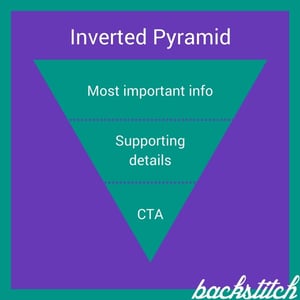Being able to write engaging copy can make or break your internal communications strategy.
But, not every company has a dedicated department for its internal communications (IC).Often, this job is handed to human resource or marketing teams — who might view IC as an afterthought.
Employees don’t want to read content that feels like it was written as an afterthought. And whether you’re a professionally trained writer or not, your copy still needs to be crisp, clear and engaging.
Only 19 percent of employees report to having a “high level” of understanding of their benefits, according to a recent report. In addition, approximately 50 percent of employees don’t fully understand the information in employee benefit materials.
So while writing good copy might seem daunting to HR and benefits professionals, but it is an extremely important task. We’re here to ease the pain.
Here are 6 things to keep in mind when writing copy. Try these, and let us know if it helps your organization improve its benefit communication.
No. 1: Know your target audience
The first step to writing good copy is to know your audience. For benefits communicators, you’ll want your words to directly address the needs of who you are speaking to. You’ll also want your tone to match the way your organization speaks.
While writing your copy, take into consideration the perspective your audience is coming from — their daily tasks and schedule, the problems they’re trying to solve and the questions they might have.
The more you know this audience, the easier it is going to be to tell them exactly the information they are interested in knowing.
No. 2 Use the inverted pyramid

Once you’ve decided what your audience cares about, you should communicate that information directly at the beginning.
The inverted pyramid is a strategy that’s used in journalism where the main idea is established at the beginning of the article, to grab the reader’s attention. You can adapt this strategy for benefits communications to increase the amount of engagement and comprehension of your content.
As your employees are likely preoccupied with projects and assignments upon receiving your communication, it’s important to get to the point quickly so that they will continue to read the rest of your post or newsletter.
When writing copy, hook them with a sentence that directly connects why they should care and what to expect from reading the rest of your communication. Then, share other relevant information and supporting details, followed by your call to action.
Six Communication Tips for Benefits Professionals
No. 3 Conversational tone
When writing, use vocabulary that is commonly use at your organizations and stay away from too many buzzwords or jargon.
Communicate as though you are having a conversation with your audience, and your copy will be more effective. Use contractions and a casual tone to convey your organization’s unique voice to employees.
One way to utilize a conversational tone is by asking questions and requesting feedback from your audience.
No. 4 Brevity
Each word you write should serve a purpose. Don’t over do it.
Remove fluff words like “very,” “many” and “extremely.” These are words that are not adding anything to your main idea, but can be distracting and add clutter to the reader.
No. 5 Clarity
Simplify your language and remove unnecessary metaphors, overused idioms or language that is just too-fancy and unnecessary.
Remember, the point of writing copy is to get your point across. No need to overcomplicate things. Although you might be tempted to use big words to sound smart and to impress, this won’t make you sound smart — it will only make your audience feel dumb, which creates a communication barrier.
No. 6 Have an actionable goal
What do you what people upon seeing your content? Have a specific, measurable goal in mind.
For benefits communicators, ask yourself: Do you want more employees to enroll in fringe benefits? Do you want to increase proper utilization of benefits? Or, do you want to improve the organization’s level of understanding of employee benefits?
Whatever your goal may be, make it easy for your employee audience to take a tangible step forward with a call to action at the bottom of your content.
In the marketing and communications world, a call to action is a term that is used to describe an instruction given to an audience that is designed to provoke a response. Whether that be “click here” or “learn more” or “share feedback,” calls to action can come in many forms.


